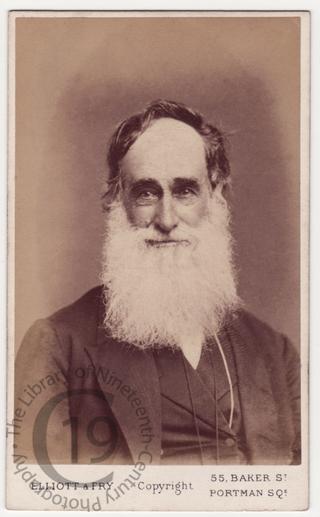
Robert Moffat
The pioneer of South African missionary work Robert Moffat (1795-1883) was born the son of a customhouse officer at Ormiston, East Lothian, in 1795. He was apprenticed as a gardener before offering himself to the London Missionary Society, and in 1816 he was sent out to South Africa as a Scottish Congregationalist missionary, arriving at Cape Town on 13 January 1817. After spending a year in Namaqualand, with the chief Afrikaner, whom he converted, Moffat returned to Cape Town in 1819, where he married Mary Smith (1795-1870), the daughter of a former employer. A remarkable woman, she proved enormously helpful in Moffat’s missionary work.
In 1820 the two left the Cape and proceeded to Griquatown, ultimately settling at Kuruman, among the Bechuana people living to the west of the Vaal river. Here Moffat worked as a missionary until 1870, when he reluctantly returned to Great Britain. During his time among the Bechuana, he made frequent journeys into the neighbouring regions as far north as the Matabele countries, the results of which he communicated to the Royal Geographical Society. In 1842 he published his well known Missionary Labours and Scenes in South Africa, followed by nine other books and translation of the Bible into Sechwana.
A builder, carpenter, smith, gardener, farmer, all in one, Moffat encountered many dangers and discouragements at first, which he overcame with his strong faith, determination and genial humour. It was largely due to him that David Livingstone, is son-in-law, took up his subsequent work.
Moffat left Africa for England on 10 June 1870. In April 1872 he became an honourary Doctor of Divinity at Edinburgh. In 1873 he received a testimonial of £5000 from his friends, and he was entertained at the Mansion House on 7 May 1881. He died at Leigh near Tunbridge Wells on 10 August 1883 and was buried in Norwood cemetery.
Photographed by Elliott and Fry of London.
Code: 122335




